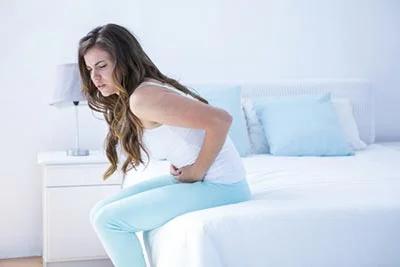What Are Uterine Fibroids?
Uterine fibroids are usually non-cancerous tissue growths inside of the muscles of the uterine wall. Uterine fibroids can vary in size and shape. They can be single or multiple in number.
Different Types of Uterine Fibroids
- Sub-mucosal fibroids – occur inside of the myometrium. They are the one that cause heavy bleeding and even fertility problems. Sub-mucosal fibroids not so common.
- Intramural fibroids – occur inside of the endometrium. They can become larger and even stretch the uterus. Intramural fibroids are the most common type of uterine fibroids.
- Sub-serosal fibroids – occur outside of the uterus, in the serosa.
- Pedunculated fibroids – occur in cases when the serosa develops a slander base that supports the tumor. Pedunculated fibroids are sometimes seen even outside of the vagina.
Risk Factors of Uterine Fibroids Formation
The real cause of Uterine Fibroids is not known, however there are some risk factors that lead to their formation, like:
- Family history – woman who have sisters, mother or grandmother with uterine fibroids, are more likely to develop uterine fibroids.
- Hormones – estrogen and progesterone are the hormones that affect the uterine lining every month, helping it regenerate during every menstrual cycle. Hormonal imbalance can stimulate the growth of uterine fibroids.
- Pregnancy – it is well known that during pregnancy the production of estrogen and progesterone are increased. These hormonal changes lead to a rapid growth of uterine fibroids during pregnancy.
Women who are at a greater risk of developing uterine fibroids include the ones who suffer from obesity, who have family members with uterine fibroids, who gave birth in the past and the ones who are over the age of 30.
Signs and Symptoms of Uterine Fibroids

Signs and symptoms of uterine fibroids will depend from their size, number and localization inside of the uterus. Uterine fibroids when small can be asymptomatic. However, signs and symptoms of uterine fibroids when they are bigger and multiple include:
- Heavy bleeding between or during menstrual periods
- Blood clots in menstrual bleeding
- Menstrual cramping
- Menstrual periods that last longer than usual
- Lower back pain and pelvic pain
- Pain during sexual intercourse
- Pressure or fullness in the lower abdomen
- Increased urination
- Swelling or enlargement of the abdomen, etc.
Read more: https://www.centurymedicaldental.com/uterine-fibroids-are-they-a-potential-danger-to-every-woman/
Working Hours:
Monday 9AM - 7PM
Tuesday 9AM - 9PM
Wednesday 9AM - 9PM
Thursday 9AM - 9PM
Friday 9AM - 5PM
Saturday 10AM - 5PM
Sunday Closed
Payment: cash, check, credit cards.
Century Medical & Dental Center
770 Flatbush Ave,
Brooklyn, NY 11226
(347) 627-3988
https://www.centurymedicaldental.com/
Location on the map:
https://goo.gl/maps/DVp4q8UN3Eh5es9N9
https://plus.codes/87G8M23R+J2 Brooklyn
Nearby Locations:
Prospect Lefferts Gardens | East Flatbush | Flatbush | Windsor Terrace | Kensington
11225 | 11203 | 11203, 11210, 11225, 11226 | 11215 | 11218